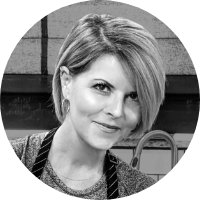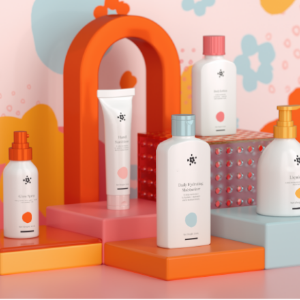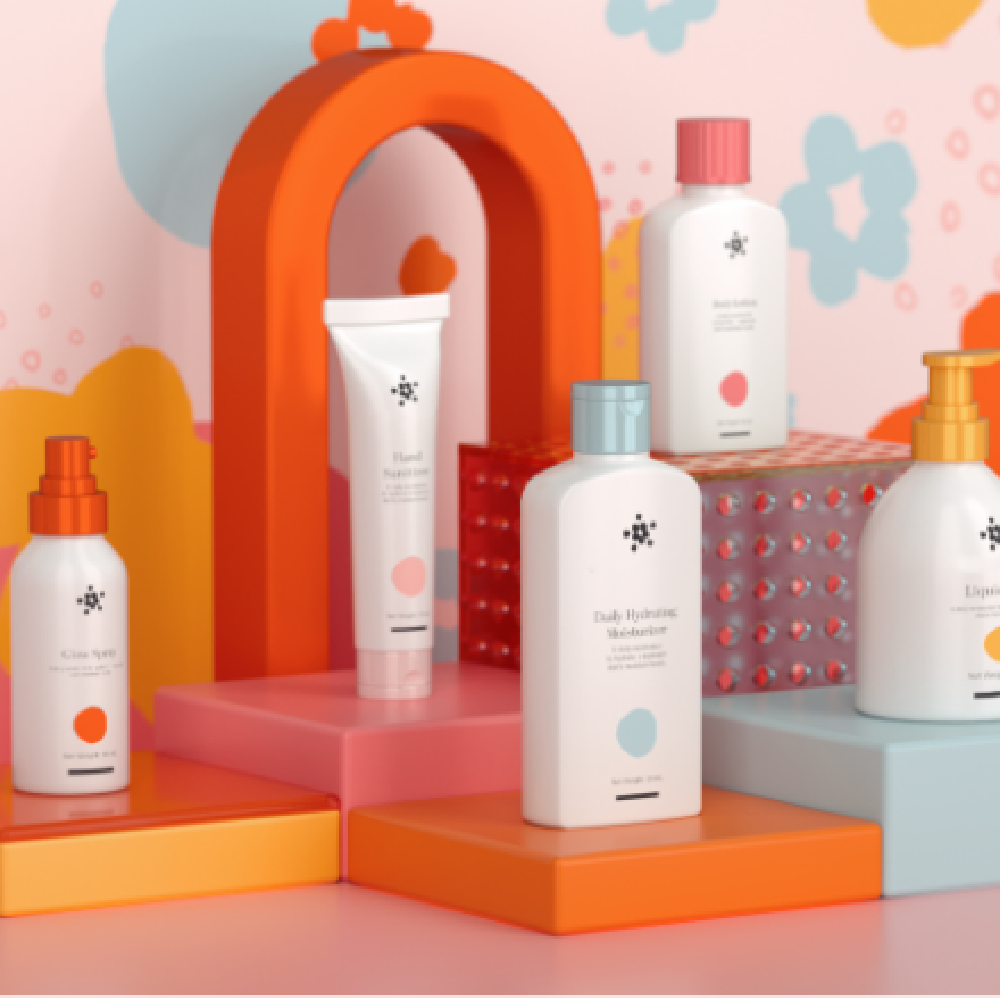HelloFresh makes sustainability look and taste good.
Households in the United States throw out around 21 million tons of food per year, and HelloFresh — the largest meal kit delivery service in the US — is here to help tackle that problem.
It’s both a successful publicly-traded company and a mission-driven business. That rare intersection of proven success and social impact is what makes the HelloFresh business model — and its teams — so unique.
In the second episode of The Power of Teamwork podcast, HelloFresh Sustainability Director Jeff Yorzyk and Director of Culinary Innovation Kristin Bryan discuss how creating a more sustainable world is fueling their growth as a company — from beating the “what’s for dinner?” blues to building a tight-knit company culture.
As the champion of teamwork, Adobe is changing the world through digital experiences. Empower your team to do its best work through Adobe solutions — learn how in the webinars below.
Show notes
The Power of Teamwork is brought to you by Adobe and hosted by Garrett Schwartz.
Disclaimer: The views and opinions expressed by guests are their own and their appearance on this podcast does not imply an endorsement of them or any entity they represent.
HelloFresh makes sustainability look and taste good.
Households in the United States throw out around 21 million tons of food per year, and HelloFresh — the largest meal kit delivery service in the US — is here to help tackle that problem.
It’s both a successful publicly-traded company and a mission-driven business. That rare intersection of proven success and social impact is what makes the HelloFresh business model — and its teams — so unique.
In the second episode of The Power of Teamwork podcast, HelloFresh Sustainability Director Jeff Yorzyk and Director of Culinary Innovation Kristin Bryan discuss how creating a more sustainable world is fueling their growth as a company — from beating the “what’s for dinner?” blues to building a tight-knit company culture.
As the champion of teamwork, Adobe is changing the world through digital experiences. Empower your team to do its best work through Adobe solutions — learn how in the webinars below.
Show notes
The Power of Teamwork is brought to you by Adobe and hosted by Garrett Schwartz.
Disclaimer: The views and opinions expressed by guests are their own and their appearance on this podcast does not imply an endorsement of them or any entity they represent.
The Power of Teamwork Season 1, Episode 2
“Creating Sustainable Impact and Tight-Knit Teams” — HelloFresh
Host: Garrett Schwartz, Product Marketing Manager, Adobe
Guests: Jeff Yorzyk, Sustainability Director at HelloFresh, Kristin Bryan, Director of Culinary Innovation at HelloFresh
Transcript
Garrett Schwartz
HelloFresh is a meal kit business on a mission. Feed the world –– but make it healthy. And — environmentally sustainable.
Each time a box is delivered, there’s a new recipe and fresh ingredients to cook a meal. The team at HelloFresh has carefully chosen each piece of the meal kit — from vendors to the cooking method and more.
Jeffrey Yorzyk
Collaboration has been what’s allowed HelloFresh to really manifest a pretty deep sustainability strategy — connecting with people and letting them bring their own individual values into their jobs. Everybody cares about sustainability, they’re just not sure how to get it done.
Garrett Schwartz
In this episode, Sustainability Director Jeffrey Yorzyk and Director of Culinary Innovation Kristin Bryan share how out-of-the-box thinking about recipe design and the environment makes for delicious recipes that are easy to make, healthy, and sustainable.
It takes a team to make it happen.
Kristin Bryan
I’m Kristin Bryan. I’m the director of culinary innovation, and I have been at HelloFresh for about a year and a half. I manage amazing culinary product strategy and editorial teams.
Jeffrey Yorzyk
I’m Jeff Yorzyk. I’m senior director of sustainability at HelloFresh. I’ve been here for over five years now and essentially started the program here. That is everything from greenhouse gas program to our waste management program, out to responsible sourcing and to our charity program, and a whole lot of pieces in between.
The HelloFresh mission is to change the way people eat forever and we want to do that sustainably. Our business is still growing. We continue to learn and develop around that model and keep figuring out how to make it more sustainable, but in the end, our business model really has quite a bit of elimination of food waste in it.
It optimizes a lot around the supply chain as well as distribution. We’ve seen some great results. There’s a lifecycle assessment study we’ve done that demonstrated a 30% reduction in carbon footprint versus making the same meal from food you would buy from the grocery store.
There’s a few different ways to create a sustainability organization within a company. You can either hire a small army of people and essentially have them in everybody’s business, or you can make it everybody’s business.
At HelloFresh, we have a relatively small team. My team’s about five people, but we’re highly networked into the organization. So if there’s a project to do something around recipe design, it’s gonna be Kristin’s team that’s gonna be doing it. If there’s a project around procurement, it’s gonna be the procurement team.
If we’re working on, you know, maybe trying to work on electric vehicles or something that’s gonna be within the logistics team. Bringing people’s individual values to bear essentially is helping everybody understand how sustainability is part of their job versus this unique department that’s trying to do something on the side.
That’s a much more powerful approach.
Garrett Schwartz
Kristin, how are you working with Jeff on a day-to-day basis?
Kristin Bryan
It’s very important to our customers and to our company that we provide meals that are thoughtfully curated and are sustainable. They’re assisting with reducing that carbon footprint that Jeff was mentioning.
So we really take into consideration things like packaging, the number of ingredients in a dish, let’s see how flavorful we can make this. How fast, easy, fresh we can make this dish for our customer, serve them, provide that need that they have or, or fulfill that need that they have, but at the same time be responsible and try to provide them with a way to make dinner that is sustainable at the same time, and meets our needs and theirs as well.
We also are extremely sensitive to the fact that customers are wanting more plant-based food. It’s great because that is, again, one of our missions is to reduce that carbon footprint. We are excited about providing them with new vegan dishes, new vegetarian dishes.
We are working on a regular basis with Jeff’s team to deliver those exact meals that help with our environmental initiatives.
Garrett Schwartz
Love that. Now, for someone like me, when I think of sustainability, I’m thinking, you know, I come from digitizing paper processes, so removing paper and stuff like that, but sustainability isn’t just about the boxes you put your food in.
Can you talk a little bit more about the kinds of metrics that inform your work and how they help you make a greater impact?
Jeffrey Yorzyk
Sustainability is data driven at HelloFresh. We, as part of our research, did a lifecycle assessment with a global consulting firm in 2021 that essentially evidenced where is the carbon footprint and most of the impact of our product.
As would probably be expected, most of it was sitting in our supply chain, especially with a production of food. Quite a bit of it was sitting in some of the logistics around that food and cooking of that food, as a matter of fact on the customer end. So that really helped us focus in on what the key issues we needed to work on.
Looking at our own facilities, looking at what we have control over, we moved the entire organization over to renewable electricity because that was something within our control.
But our lifecycle assessment then told us that really wasn’t the biggest part of the impact. It was sort of staying in a field, chewing grass, or growing out of the ground. So that’s really where our focus is pointed going forward. We did want to get our own house in order before we started to talk to our supply chain about what they should be doing.
Along that evolution of our own operational footprint, we have decreased our carbon footprint per unit of revenue by 50% since 2019 to 2022. So we met some very strong reduction goals. And then at the end of 2022, we joined the Science-Based Targets Initiative, which is essentially a leadership initiative globally across leading companies focused on maintaining a 1.5 degree pathway in accordance with the Paris Accord. I really think our culinary team uses their data-drivenness day to day.
Garrett Schwartz
On the culinary innovation team with Kristin, employees integrate data with their unique skills as chefs and food scientists. They design each recipe to perfection.
Kristin Bryan
I’m happy to say data informs our development, our culinary development. I’m very happy to mix the two. I think it takes a very skilled recipe developer to use both, and they do. We have some very, very talented individuals who are on our team.
They also have food science backgrounds. Some of them are former chefs, and they take that data, process it, and use it along with their innovative skills, and really their total collective genius, to create dishes that our customers love. So we do put it out there. We do have a data funnel that comes back to us, and it gets very granular right down to the ingredient.
So if an ingredient is particularly polarizing to our customers, we find ways to either use it differently or exclude it altogether.
Garrett Schwartz
There’s two major inherent challenges in the meal-kit business. One is food waste, two is carbon footprint. What roles do each of your teams have in working together to address food waste and carbon footprint?
Kristin Bryan
Like Jeff said, you really have to get your own house in order first, and then you can impart this way of thinking to customers and to your vendors.
We start from inside the kitchen, making sure that we are cooking sustainably, responsibly. We don’t have any food waste here because we recycle all of our food waste in our test kitchen. But then we also partner with Jeff’s team to execute on these programs like Meals with Meaning and Hunger Matters.
We are partnering to do a culinary training initiative with a kids camp this summer. So there’s just all kinds of things that we partner with Jeff’s team on to make sure that if we have some overage, it goes into our meals with mini boxes.
We don’t want that food to spoil, we don’t want it to be discarded. We want people to eat it and enjoy it, and we want to provide nutrition and full tummies. We really want folks to have that food. That Meals with Meaning program, I think for me, is probably the most impactful part of our collaboration with Jeff’s team because I know that all of those additional ingredients are really going to those who need it and not going to waste.
Jeffrey Yorzyk
In 2022, we did pilot basically a recipe carbon tag for our customers to see what the high carbon and the low carbon recipes are, for our customers to see what the low carbon recipes on the menu are. We’re still working through the back-end pieces required to enable that, but our goal is essentially to have a recipe calculator.
So when a chef is looking at the nutritionals and the cost elements of a recipe, they’re actually able to see the carbon footprint of it as well. There are pieces we can do on our side from reducing carbon within our supply chain to engaging with our culinary team to develop lower carbon recipes, and frankly even to engaging with our customers to guide them towards lower carbon options in the first place.
Garrett Schwartz
The recipe calculator is where Jeffrey and Kristin’s teams both really shine.
Jeffrey Yorzyk
So there’s multiple places that we can intervene. The culinary and sustainability team are really collaborating, usually around that recipe design piece because that’s their core competency within the organization.
I think Kristin’s been a little bit humble here. But frankly, that team can pivot on a dime if they need to. If we need to change out a vegetable, if we need to change something out in a recipe, they’re able to respond very, very quickly, move through the editorial and studio pieces to create recipe cards for that, and get that to our customers really rapidly when they need to. And that’s exactly what happened in the pandemic.
Kristin Bryan
This team is pretty agile.
Garrett Schwartz
Kristin, let’s talk about you’re pumping out some new recipes that you and your team have designed. Were there criteria to fit those new recipes that you had to meet? Or how did you go about designing?
Kristin Bryan
There is always a criteria for our recipes. Our recipes are extremely intentional because we have so much data on what our customers would like to have and would like to eat, how they want to prepare their food, how much time they want to prepare their food.
So yes, we have a culinary strategy team, a product strategy team that actually writes a culinary brief. We do plan the types of recipes that we’re going to be providing to our customers every year on an end of a quarterly basis.
That culinary brief is written, and it’s sent over to the culinary managers who then work with their recipe developers to develop those recipes. They are all extremely specific and have gone through some rigorous research prior to being actually developed and tested in the test kitchen.
Garrett Schwartz
So when you’re selecting suppliers for new recipes, say, say you try some butter lettuce, and your team goes, “My God, this is the best butter lettuce I’ve ever had.” Is that how you choose your ingredients?
Kristin Bryan
If you think about our volume, we have layers of vendors for specific ingredients because we do have such a large volume and we want to make sure that we can if we use butter lettuce, everybody gets the same butter lettuce or at least something very similar.
We do go to our procurement team often with special requests. I personally would love to have ramps for ramp season, but I was told “no, probably not gonna happen.” But, there are things that they will try to go get for us that we really want. Like we just got goat cheese, which I love.
Jeffrey Yorzyk
HelloFresh’s onboarding process is really this incredible partnership between our procurement and our quality teams. They spend quite a bit of time vetting our suppliers. There is no supplier that has not seen a HelloFresh face at their facilities.
We do visit all of them. And the onboarding process really has a large number, from meeting our very stringent quality requirements to meeting availability and sustainability requirements that are all programmed essentially through that procurement team, and down into the quality team onboarding process.
Kristin Bryan
I think one of the most fun recipes we have is a pasta recipe, and I love it because it’s simple. I don’t know about you all, but personally, when I go home, I do have HelloFresh for dinner, but I want it to be fast because I’ve been in the kitchen all day.
I love this recipe because we make these beautiful little zucchini ribbons so it feels very elevated, like you went to a restaurant for dinner — but you didn’t, you made it in your own kitchen. That’s a great recipe. We had a developer, actually a year or so, go develop that particular recipe and it’s done very, very well.
We also have a firecracker meatball dish that is probably one of our most popular dishes on our menu. And that actually came about because we had a few recipe developers decide to go to happy hour together. And they tasted firecracker sauce and decided we have to do something with this. We have to replicate this in the kitchen. There’s a lot of ideation that goes on and exploratory work in our kitchen. And at the end of the day, delicious things happen.
Garrett Schwartz
Kristin, can you tell us about the people on your team, the culinary managers? How do their skills fit into the bigger picture?
Kristin Bryan
Yeah, they’re amazing. My culinary managers have very diverse backgrounds. Between all of them, probably 60 years of culinary experience and business experience. They have food science backgrounds. Several of them have been business owners themselves, worked for famous chefs. I had one culinary manager who had worked for Food Network.
They have skillsets that are super unique, and they do a beautiful job of helping the recipe developers disseminate data and turn that into really innovative food. It’s pretty amazing actually to watch it happen.
Garrett Schwartz
HelloFresh got started in 2011. The company has been around for just about 12 years. The last few are worth bragging about.
With Jeffrey’s direction the company has made huge progress toward their sustainability goals. Those improvements aren’t just about the food. Their efforts stretch to operations, waste management, and customer satisfaction.
Garrett Schwartz
How do you measure success? What numbers or improvements have you seen that speak to the success of your teams?
Jeffrey Yorzyk
HelloFresh had food waste and carbon intensity goals from 2019 to 2022. We essentially reduced carbon impact per unit of revenue by 50%. We reduced our food waste impact by unit of revenue as well. You know, those are more the environmental side. I did work very actively in basically switching the HelloFresh operations side over into renewable electricity.
Making that switch to help us to meet our goals around climate, as well as supporting emerging development of renewable energy that we believe in the first place. Then in terms of how we measure things, we have a number of internal goals, but certainly we look at what percent of our unused food every week gets donated into the communities where we do business.
How do we maximize against that from a percentage basis? I know our procurement team is trying to figure out how to minimize the unused surplus in the first place. We’re trying to figure out how to donate as much of it as possible, and then when, if we can’t donate it, we’re trying to figure out how much of it can we divert from landfill.
There’s some great technologies coming out like biogas generators and some of these pieces that create energy from food waste which we’re really heavily tied to right now. We’re certainly seeking it out wherever we can. Then on the charity side of our program, you know, we look at the partners we’re doing work with and the number of meals we’re able to mobilize into the community.
In 2020 when we launched our Meals with Meaning program, we were able to donate 750,000 meals into the communities where we do business. In 2022, that grew to 1.5 million. In 2023 that came up to 2 million meals. Really our ability to support these communities and help the food insecurity as our local municipalities are working to bring those people out of food insecurity.
Our charity programs have been this incredible public-private partnership that we almost hadn’t planned for. It just occurred as we tried to figure out how to solve the problem. There’s different metrics, of course, for different programs. But yeah, I do work across all of it.
Garrett Schwartz
And Kristin, same question to you — how do you measure success as a culinary director?
Kristin Bryan
I really look at operational efficiencies and productive efficiencies because we’re continually trying to optimize resources and put out the most quality product we can, but as efficiently as possible.
Some of the other metrics we’re using are metrics that our consumer insights team provides to us, and that’s basically customer feedback in the way of scores, recipe scores. There’s several different ways we measure and use metrics to measure productivity and customer enthusiasm for our food and feedback in general.
We stay very close to our customer base. We have customers who actually write into us. I have to tell you this one story. We had this really sweet child who wrote us a letter, and it came to our office and they insisted that we need to basically come clean with the pickled onion. They said pickled onion is onion, it is not a pickle. So I don’t know why you tell me it’s a pickled onion. And our culinary manager actually wrote this child back a letter. That’s the fun feedback. But yes, we do. We have social media, we have a lot of comments on social media, and we have our culinary team on social media as much as possible just engage. I love that feedback.
Garrett Schwartz
And is it the same for you, Jeff, or do you stay out of that part?
Jeffrey Yorzyk
No, we do. We see some customer feedback on the sustainability side, but frankly, the majority of it is around flavor, convenience, and maybe cost. Sustainability comments tend to follow after that.
As you might imagine, they tend to focus on packaging because that’s the thing that customers have to handle personally. So they have a personal experience with it. And they’re not hesitant to tell us about any dislike they have of it. Certainly we continue to do our best to use those comments to find new ways to either motivate our teams or to respond to what customers are asking for.
There’s some really interesting challenges in food just in that food quality and safety has to come first. That really limits some of our packaging choices, but it definitely helps drive us towards innovation, where we see emerging new packaging out there. A lot of our work ends up being on communicating outward to customers, through helping them understand what we’re doing, how we’ve switched over to renewable energy, how we help them fight food waste.
Not everybody really understands how a meal kit might be better, especially if they feel like there’s a negative packaging implication. They might not fully understand that there’s a lower carbon footprint to eating this way. That they’re saving food waste by eating this way. And there’s multiple other benefits, as well as helping support some of the communities that we’re working with.
So we generally spend a fair amount of time educating them. Then even beyond our customers, we spend quite a bit of time aggregating sustainability data or ESG data known as environmental, social, and governance. We spend quite a bit of time working with our internal teams to make sure we’re communicating that to investors in the investment community properly because that’s a very high interest item for investors these days.
Garrett Schwartz
Now compassion doesn’t always factor into business decisions, especially when tackling big problems. But I keep hearing all of these sustainability initiatives giving back to the community. People that are maybe a little bit less fortunate or going through hard times, really helping them out.
How do you think teams across the company show this core value of compassion?
Kristin Bryan
We have quite a few internal programs and we have a very diverse workforce. After being here a year and a half, HelloFresh works very hard at making sure that they are meeting needs not just for our customers, but for what we consider our internal customers — our employees.
So yes, Garrett, when you say compassion, there is a ton of compassion at this company. Everyone in every department has an opportunity to participate in programs that Jeff’s team is involved in. Not only you know, sustainably, or the sustainability programs, but in other programs that support our culture or our diverse workforce.
I don’t think, Jeff, you’re giving yourself as much credit as you should. Everyone in our company knows the sustainability team. His team is small but mighty, but they have developed these amazing cross-functional relationships with just about every department in our company. And, that’s not just at headquarters either. That’s in the distribution centers across the US.
Garrett Schwartz
What are some core philosophies or guiding principles that other businesses could take away from to implement into their business strategy when it comes to sustainability, when it comes to carbon footprint?
Jeffrey Yorzyk
Individuals we can get down a certain train of thought very easily. Whereas if you’ve got a team working on something, somebody had an idea that wasn’t taken seriously previously or seriously enough previously that they can bring to bear when we have to pivot. There’s a lot more ideas at the table.
So really making sure we’re talking to them on a regular basis so that we can be very agile as we’re moving through things.
Kristin Bryan
I think it’s important to harness the collective genius in your team and then give them the space to really run with it.
Jeffrey Yorzyk
Those are some of our core values as a company.
Garrett Schwartz
For more sustainability news, check out the HelloFresh website and follow Kristin Bryan and Jeffrey Yorzyk on LinkedIn.













